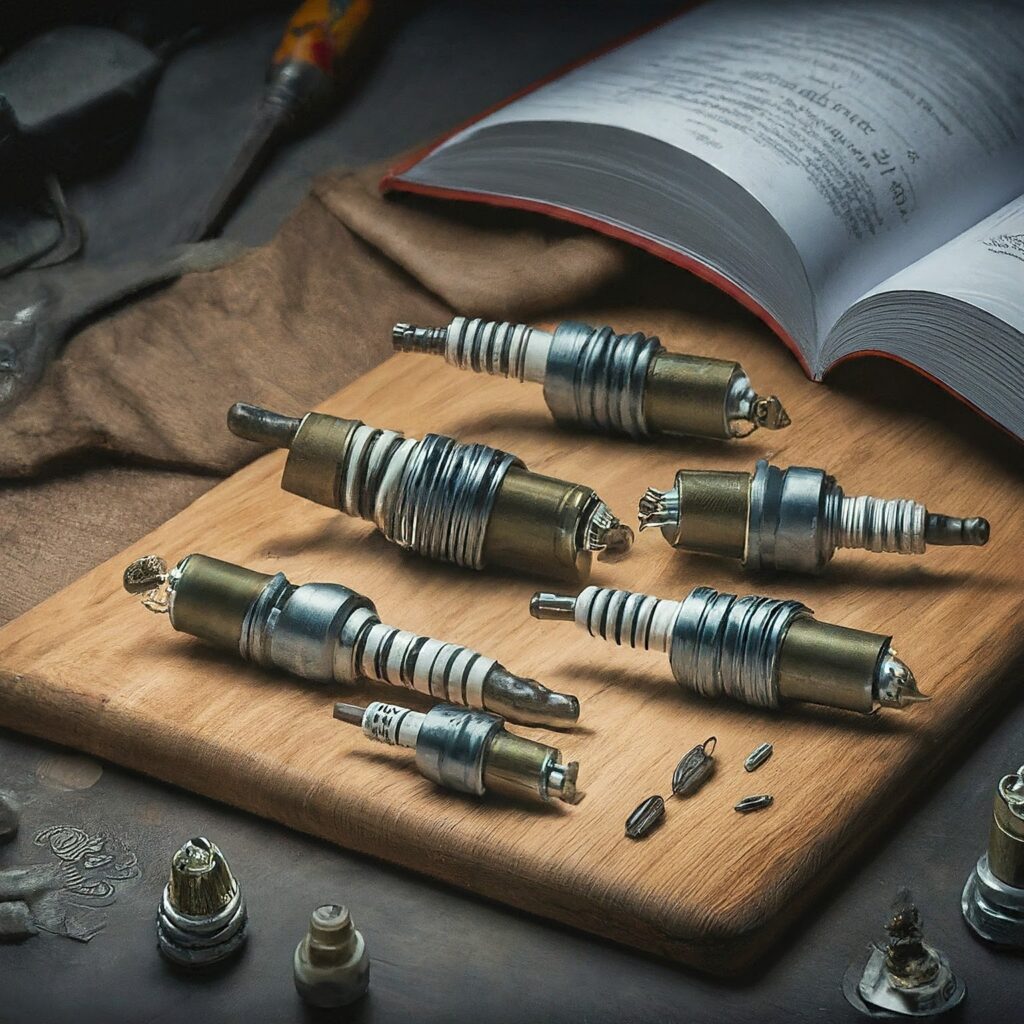
If you’re someone who likes working on cars or fixing things yourself, you probably know how important spark plugs are for your car’s engine. They’re like tiny but super important parts that help your engine work well. This article will help you understand how to gap spark plugs without using a special tool—something that anyone can do, even if you’re not an expert.
Understanding Spark Plug Gap: Why It Matters
The spark plug gap, or the space between its key parts, is crucial for your car’s engine. Imagine it like a tiny bridge. If this space is too big or too small, it can affect how well your engine works. Think of it as the right distance for a high-five – not too close, not too far. This gap directly impacts combustion, which is like the engine’s heartbeat. If it’s off, your car might not run smoothly. So, making sure this gap is just right ensures your engine performs at its best, keeping your car happy and healthy.
Step-by-Step Guide :
Step 1: Gather Your Tools and Materials
Even though we’re doing this without a special tool, you’ll still need a few things. Get your spark plugs, and some feeler gauges (which are like flat pieces of metal in different sizes), and find a nice flat place to work. Also, make sure you have good light so you can see well.
Step 2: Know Your Vehicle’s Specifications
Before you start, find out what the right gap is for your specific car. You can check your car’s manual or look it up on the car maker’s website. Different cars might need different gaps, so it’s good to know what’s right for yours.
Step 3: Be Safe: Disconnect the Battery
Safety is super important! Before you do anything, disconnect the car battery. This helps keep you safe while you’re working on the spark plugs.
Step 4: Remove the Spark Plugs
Find where the spark plugs are in your car’s engine and use a tool called a socket wrench to take them out. Remember where each spark plug was so you can put them back in the right order later.
Step 5: Inspect the Spark Plugs
Before you start adjusting anything, take a good look at your spark plugs. Check if they’re damaged or worn out. If they are, it might be a good idea to get new ones.
Step 6: Familiarize Yourself with Feeler Gauges
Now, we’re going to use something called a feeler gauge. It’s just a flat tool with different thicknesses. It helps us measure the gap between the parts of the spark plug.
Step 7: Determine the Target Gap
Know what gap size your car needs. This is an important number, and you can find it in your car’s manual or online.
Step 8: Begin the Gap Adjustment
Take one spark plug and put it on a flat surface. Use the feeler gauge to find the right size for the gap. Gently slide the feeler gauge between the parts of the spark plug.
Step 9: Adjust as Needed
If the feeler gauge fits well, the gap is good. If it’s too tight, carefully bend one part of the spark plug to make the gap bigger. If it’s too loose, gently tap one part to make the gap smaller.
Step 10: Repeat for Each Spark Plug
Do this for each spark plug, making sure you get the right gap for each one. Take your time to do it carefully.
Step 11: Reinstall the Spark Plugs
Once all the spark plugs are done, put them back where they belong in the engine. Tighten them with the socket wrench.
Step 12: Reconnect the Battery
Now that the spark plugs are in place, reconnect the car battery. Your spark plugs are now ready to make your engine work well.
Why Choose Tool-Less Spark Plug Gapping?
Doing this without a special tool can save you money and time. Feelers gauges are easy to find and use, making them a good choice for people who like fixing things themselves. By following this guide, you can make sure your spark plugs are just right without needing any special tools.
In conclusion, gapping spark plugs without a tool is something anyone can do with a bit of patience and attention. This helps your engine work better and last longer. Remember to check your car’s manual, be safe by disconnecting the battery, and take your time. With these simple steps, you can easily make sure your spark plugs are set up just right. Happy fixing!
Useful Resources:
- Spark Plug Gap Settings– Find specific gap information for various spark plug brands and models.
FAQ’s:
Q1: Why is it essential to gap spark plugs?
A1: The gap in spark plugs affects combustion and engine performance. If the gap is incorrect, it can lead to misfires, poor fuel efficiency, and overall engine issues. Properly gapped spark plugs ensure efficient and reliable engine operation.
Q2: Can I gap spark plugs without a specialized tool?
A2: Absolutely! This guide focuses on using a common household item – feeler gauges – making it accessible to DIY enthusiasts without the need for specialized tools.
Q3: How do I find the recommended spark plug gap for my car?
A3: Refer to your vehicle’s manual or check the manufacturer’s website for specifications. Each car model may have different gap requirements, so it’s crucial to know the specific details of your vehicle.
Q4: Is it necessary to disconnect the car battery before gapping spark plugs?
A4: Yes, it’s a safety precaution. Disconnecting the battery reduces the risk of electrical mishaps while working on the spark plugs, ensuring a safer DIY experience.
Q5: Can I use something other than a feeler gauge for this process?
A5: While feeler gauges are recommended for their precision, you can use alternatives like a set of thin wires or similar objects. However, keep in mind that precision is crucial for optimal engine performance.
Q6: How often should I check and gap my spark plugs?
A6: Check your car’s manual for manufacturer recommendations, but as a general rule of thumb, it’s a good practice to inspect and gap spark plugs during routine maintenance, typically every 30,000 miles or as specified by your vehicle’s maintenance schedule.
Q7: What should I do if I notice damage or wear during the spark plug inspection?
A7: If you observe any damage or wear, it’s advisable to replace the spark plugs. Using damaged plugs can lead to poor engine performance and fuel efficiency.
Q8: Can I reuse the same spark plugs after gapping them?
A8: Yes, you can reuse spark plugs after gapping, provided they are still in good condition. If you notice any signs of wear or damage during the inspection, it’s better to replace them with new ones
Q9: Does Removing Catalytic Converter Increase Fuel Consumption?
A9: Removing the catalytic converter may lead to increased fuel consumption. The catalytic converter plays a crucial role in reducing harmful emissions and optimizing fuel efficiency. Removing it could disrupt this balance, potentially resulting in higher fuel consumption and negatively impacting your vehicle’s environmental performance. Click here to read the complete details.


